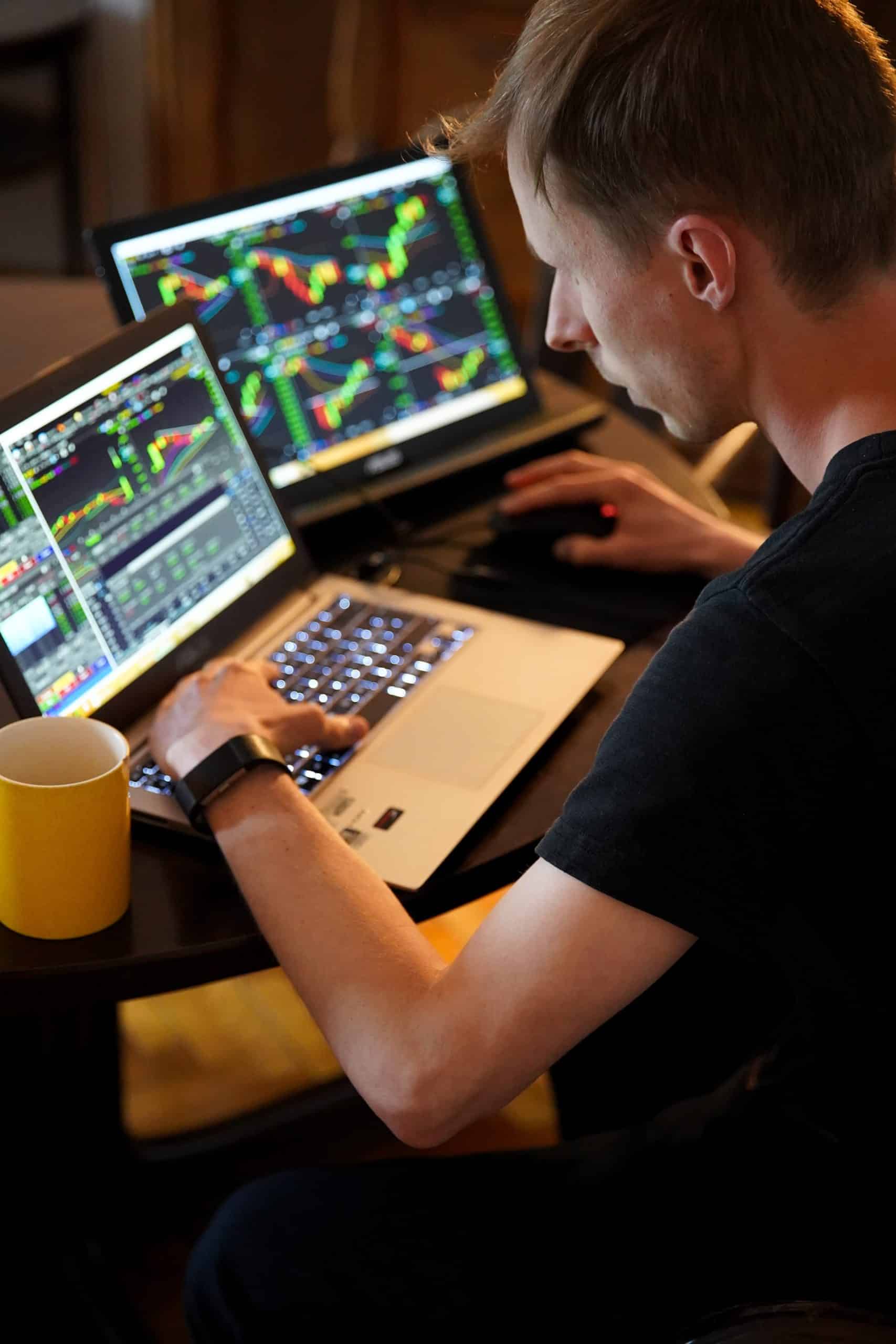‘Day trading’ is a broad term given to a variety of actions taken by traders when financial instruments are bought and sold during the course of a day. Many day traders actively start many trades within the same day, capitalizing off small price movements – up or down. Day trading is quite risky, thanks to market volatility, and is best avoided by unskilled traders.
For their part, brokerages differ in their approach to day trading – some are better suited to high-frequency trading, along with all the tools needed to meet the needs of the individual trader. A variety of online brokerages exists, with powerful trading platforms geared towards this activity. Day traders require specific platform capabilities to succeed, such as detailed charts and graphs, accurate live-streaming quotes, and the option to enter/exit/modify trades rapidly.
IMAGE: UNSPLASH
A Solid Education In Day Trading
As expected, it is necessary for day traders to conduct all the necessary research to ensure that they are fully aware of the underlying fundamentals of the stocks. While many believe it to be a part-time activity, professional day traders like Timothy Sykes routinely stress the importance of taking day trading seriously.
This self-styled top trader converted $12,415 into $5,237,584 over 2 decades. His trading strategies are part of a broad learning program made up of multiple tutorials, practical guides, and learning exercises which have yielded huge profits for lots of traders over the years. Like other gurus in the field, his insights are sought out by many people.
The Timothy Sykes Millionaire Challenge charts a different course to run-of-the-mill trading resources. The focus is on a comprehensive and complete understanding of the trading arena, in a broad set of video tutorials, and expert guides featuring in-depth analysis of all aspects of the trading realm.
The lengthy course material provides adequate groundwork to develop a strong foundation in the theoretical elements of day trading activity, and the practical applications thereof. Given that he fined-tuned his knowledge of trading penny stocks to the point where he became a multimillionaire adds credibility to his strategies. While his focus was on penny stocks, the ability to successfully negotiate day trading activity made him a success.
Knowledge Drives Success With Day Trading
The most successful day traders all credit knowledge as the primary driver of their profitability. Day traders understand market basics. This includes stock market volatility, pricing mechanisms, demand and supply, breaking news, interest-rate announcements, quantitative easing, monetary and fiscal policy measures, breakthrough technologies, and the power of speculative sentiment. The top day traders carefully plot out their activities before they begin to trade for real money.
A ‘narrowed-down’ listing of options including top stocks, commodities, indices, or currencies is recommended, followed by in-depth analysis of each financial instrument’s performance. The volatility in day trading may seem off-putting – but it’s necessary. Without the wild swings there are no big profits.
Sykes and other successful traders routinely point to the importance of setting a trading budget for day trading activity. With so many financial instruments, it is foolish to allocate more than 1% – 2% of your available bankroll to any individual trade.
For example, a trader with a $10,000 day trading budget should not exceed more than $200 per trade. The objective is to make lots of trades, and close the majority of them out profitably. With a trading budget of $50,000, a 2% maximum allocation per trade would amount to $2000 – a figure which may be too high for most day traders. It is preferable to drop the percentage to 1% or less, to protect your trading budget against risk.
Buying Fractional Shares Is Possible
Fortunately, many trading brokerages allow casual day traders to make partial stock purchases, particularly with stocks like Tesla (NASDAQ: TSLA) at $890+, Google (NASDAQ: GOOGL) at $1434 +, or Berkshire Hathaway Class A (NYSE: BRK.A) stocks at $275,600+ per unit. These are known as fractional stocks. By buying ‘portions’ of stocks, traders can cash in on the action without being priced out of the market.
As a new trader with access to funds, it’s important to start slowly. That means day trading activity should not be a rush to go all-in. The size of the trading budget should grow alongside your degree of training and understanding of the market.
Naturally, there are many other important elements to focus on when trading stocks during the day. These include setting realistic profit targets. Given that the win/loss ratio is barely over 60% with successful traders, it’s important to be realistic about one’s objectives. In much the same way, it’s necessary to protect against losses by way of limit orders and market orders.
These actions require a deep understanding of pricing mechanisms, like when trades are executed with market orders for buying purposes and limit orders which are applicable to buying and selling of financial instruments.
Perhaps the most important advice that trading experts offer newbies is the following: Keep calm and trade with a level head. Volatility is part of trading – without it there is no money to be made.
If you are interested in even more business-related articles and information from us here at Bit Rebels, then we have a lot to choose from.


COMMENTS